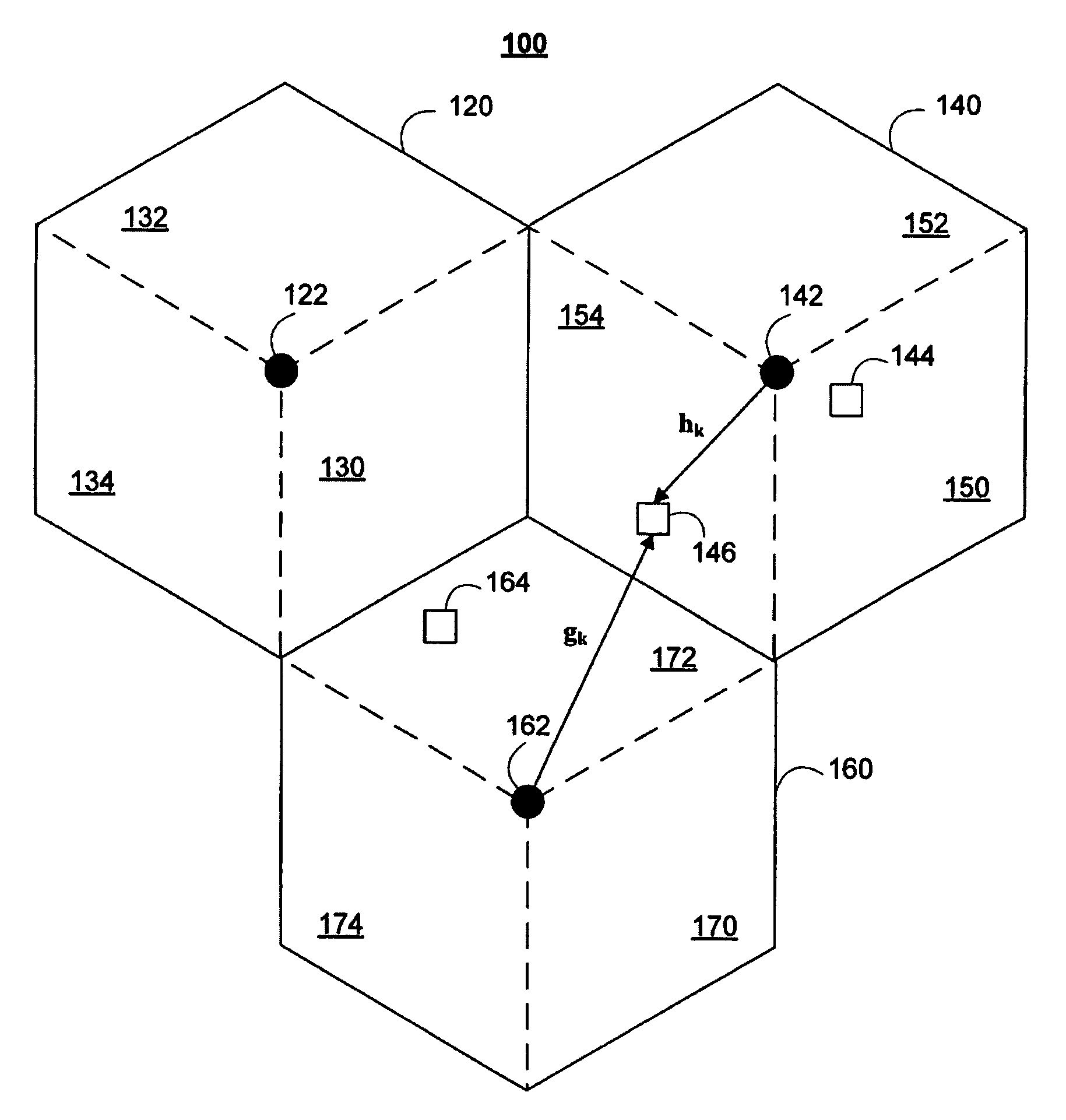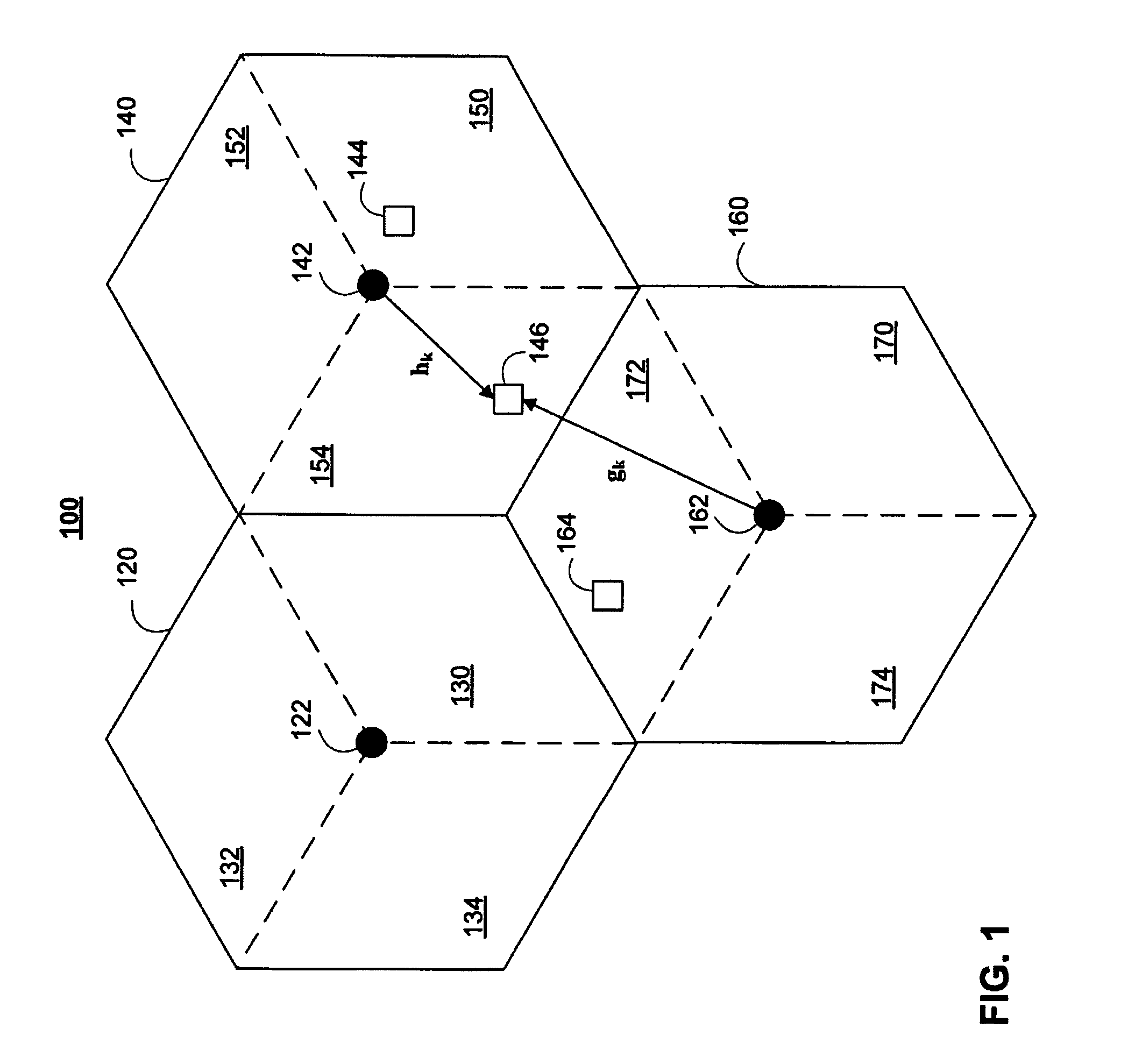Pilot design for universal frequency reuse in cellular orthogonal frequency-division multiplexing systems
a technology of orthogonal frequency division and pilot design, applied in the field of transmission information, can solve the problems of difficult to estimate the parameters of channels and difficulty in achieving frequency reuse of one, and achieve the effect of minimizing co-channel interference and maximizing throughpu
- Summary
- Abstract
- Description
- Claims
- Application Information
AI Technical Summary
Benefits of technology
Problems solved by technology
Method used
Image
Examples
Embodiment Construction
[0027]FIG. 1 shows a simplified diagram of illustrative cellular system 100. Cellular system 100 can include a plurality of base stations that are interconnected to form a mobile or cellular network. These base stations can include base stations 122, 142, and 162. Each of these base stations can be configured to communicate with mobile stations located within a particular physical area within that base station's radio communications range. The physical area may be referred to as a radio cell. In particular, base station 122 may communicate with mobile stations within radio cell 120, base station 142 may communicate with mobile stations within radio cell 140 (e.g., mobile stations 144 and 146), and base station 162 may communicate with mobile stations within radio cell 160 (e.g., mobile station 164). In FIG. 1, radio cells 120, 140, and 160 are represented by hexagonal regions, although this shape is merely illustrative.
[0028]Mobile stations 144, 146, and 164 may be any suitable type...
PUM
 Login to View More
Login to View More Abstract
Description
Claims
Application Information
 Login to View More
Login to View More - R&D
- Intellectual Property
- Life Sciences
- Materials
- Tech Scout
- Unparalleled Data Quality
- Higher Quality Content
- 60% Fewer Hallucinations
Browse by: Latest US Patents, China's latest patents, Technical Efficacy Thesaurus, Application Domain, Technology Topic, Popular Technical Reports.
© 2025 PatSnap. All rights reserved.Legal|Privacy policy|Modern Slavery Act Transparency Statement|Sitemap|About US| Contact US: help@patsnap.com



